
The front garden where my property hits the road had enough of a slope to make mowing the grass a little iffy. Like any good gardener, I thought, “Why grow grass when you can grow plants?” In its second year, the bed I had replaced the lawn with had begun to fill in. The plants were getting bigger and beginning to mesh together. That’s when it became a problem.
Many of the plants blocked the view from the driveway of oncoming traffic. People drive way too fast on my road, and as much as I love my plants (and hate extra work), I couldn’t risk any of my loved ones getting into an accident because my ‘Big Blue’ sea holly (Eryngium × zabelii ‘Big Blue’, Zones 4–9) looked too good to move. Thus began my quest for short plants—anything under 2 feet I would consider, but 18 inches or less was what I needed.
As I began amassing countless short varieties, only some of which worked in my front bed, I started planting shorter plants all over my garden. I would take notice of them, too, in all the gardens I visited, residential and botanical. I made mental notes of how others used small plants: the roles they could play and how essential they are to completing the look of a garden, a bed, or a vignette.

‘Millenium’ ornamental allium has good looks that last
Name: Allium ‘Millenium’
Zones: 4–8
Size: 12 to 18 inches tall and 15 inches wide
Conditions: Full sun to partial shade; any well-drained soil
Native range: Hybrid of European species
Every time I see ‘Millenium’ ornamental allium, in bloom or out, I wonder why I am not growing more of it. (Before anyone writes in about the missing “n” in the cultivar name, that is how the plant was registered. And so it remains.) Handsome, grassy foliage provides a nice, short, vertical touch. In midsummer, stalks holding rosy purple golf balls rise above the foliage. Unlike with other ornamental alliums, the foliage stays attractive and forms a nice clump. Reseeding is not an issue with this plant, although I wouldn’t mind a few seedlings. As with all good plants, bees and butterflies love it, while deer and rabbits do not.
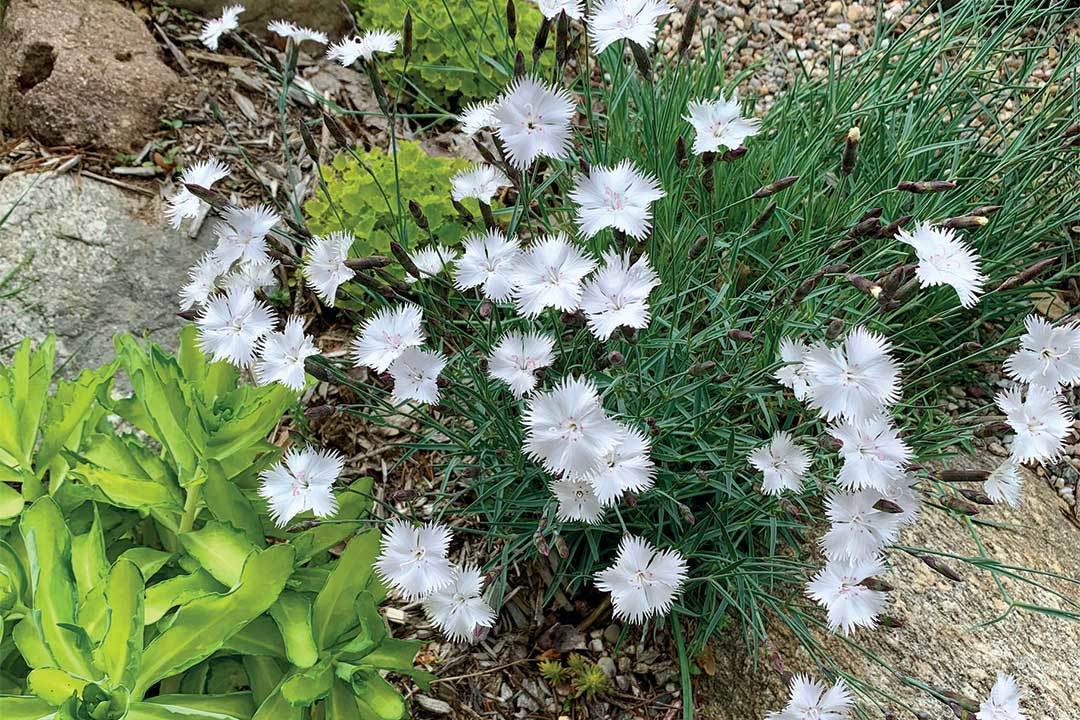
‘Greystone’ cheddar pinks won’t fade away in summer
Name: Dianthus gratianopolitanus ‘Greystone’
Zones: 4–9
Size: 6 to 12 inches tall and up to 48 inches wide
Conditions: Full sun; well-drained soil
Native range: Europe
I’ve killed a lot of Dianthus, and I don’t think it is all my fault (mostly, but not all). Some varieties just don’t like heat and humidity, so when summer gets going, they peter out. Cheddar pinks don’t seem to have this problem, though, and ‘Greystone’ cheddar pinks has become my favorite. Its pure white blooms standing over the silver foliage in late spring are much more pleasant than the searing magenta blooms of the better-known ‘Feurhexe’. My success might be because I have given it good drainage (yes, it helps keep a plant alive when you provide for it the conditions it needs) by planting it on a slight slope and surrounding its roots with sand and pea gravel. A simple haircut after it blooms does wonders for its appearance. Other sources say to cut back the foliage by a third at this time to rejuvenate the plant. I have never done this, but my shearing of the spent flowers is very haphazard, and I might achieve this level of pruning inadvertently.
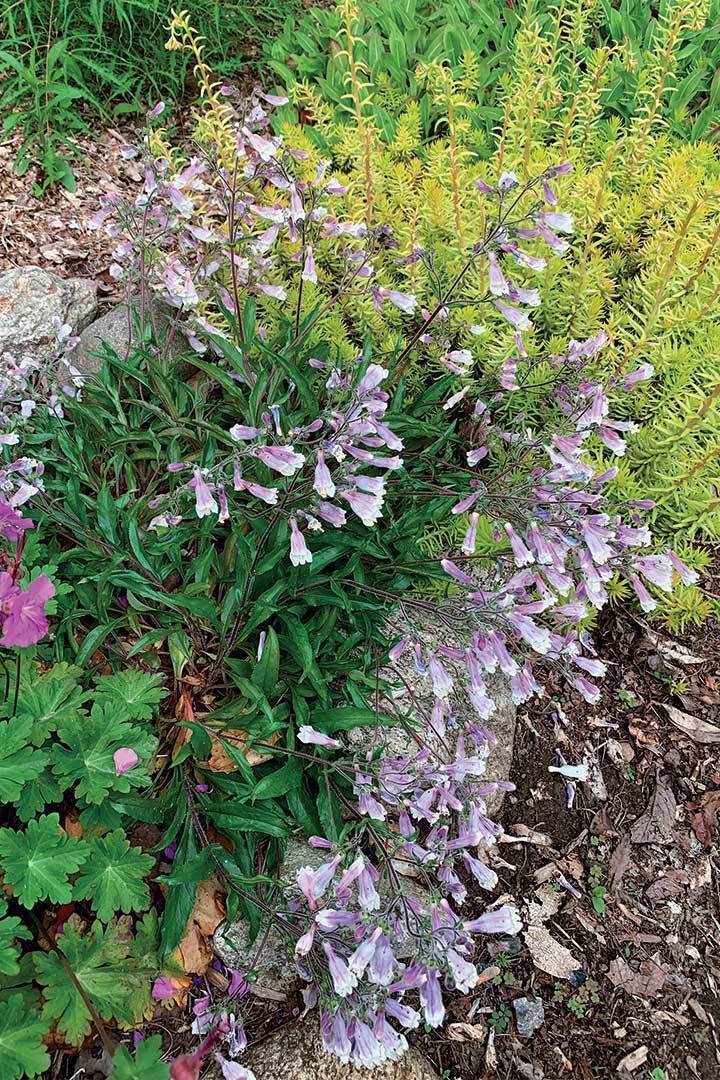
Dwarf eastern penstemon adds a bit of charm to nooks and crannies
Name: Penstemon hirsutus var. pygmaeus
Zones: 4–8
Size: 4 inches tall and 12 inches wide
Conditions: Full sun to partial shade; well-drained soil
Native range: Eastern United States
In my quest for short plants, I was pleased to come across a penstemon (having admired and failed with a number of western species) with the right height, and native to my region as well. Dwarf eastern penstemon is a low-growing cutie that forms a 4-inch tall mound of green lance-shaped foliage. In late spring to early summer, numerous flowering stems shoot a couple of inches above the foliage holding tubes of white-tipped lavender flowers. The blooms last for a few weeks, then the plant’s interest fades until fall, when the foliage takes on burgundy hues. The only care I provide is to occasionally snip off the old flower stalks once they begin to flop around.
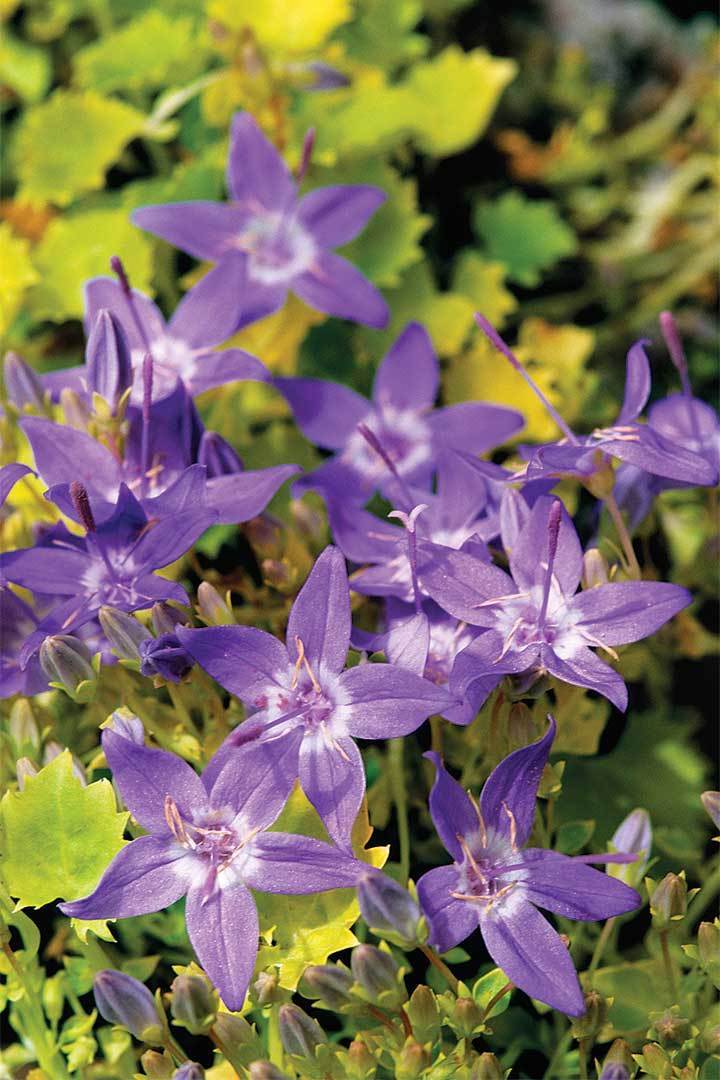
‘Dickson’s Gold’ is a bellflower you can count on
Name: Campanula garganica ‘Dickson’s Gold’
Zones: 4–8
Size: 6 inches tall and 10 inches wide
Conditions: Full sun to partial shade; average to moist, well-drained soil
Native range: Southeastern Europe
I will admit to some prejudice when it comes to the genus Campanula: the plant will either be an unrepentant thug or a persnickety diva. As with all prejudices, my feelings have little connection to the truth. I easily fell in love with the chartreuse foliage of ‘Dickson’s Gold’ bellflower, and I planted it thinking it would be too delicate to handle a New England winter. It has been several years now, and every spring I am reminded of how wrong I was. I give these slowly expanding mounds of yellow partial shade, and I get purple star-shaped flowers in early summer. The foliage loses some of its gold as summer gets going, but the plant stays attractive. A little research on ‘Dickson’s Gold’ reveals that it does not like afternoon sun in the South. Some sources say it is hardy to Zone 3, but Zone 4 is a safer bet. The designation of this species as a rock garden plant tells me it might be winter moisture rather than temperatures that kill it.
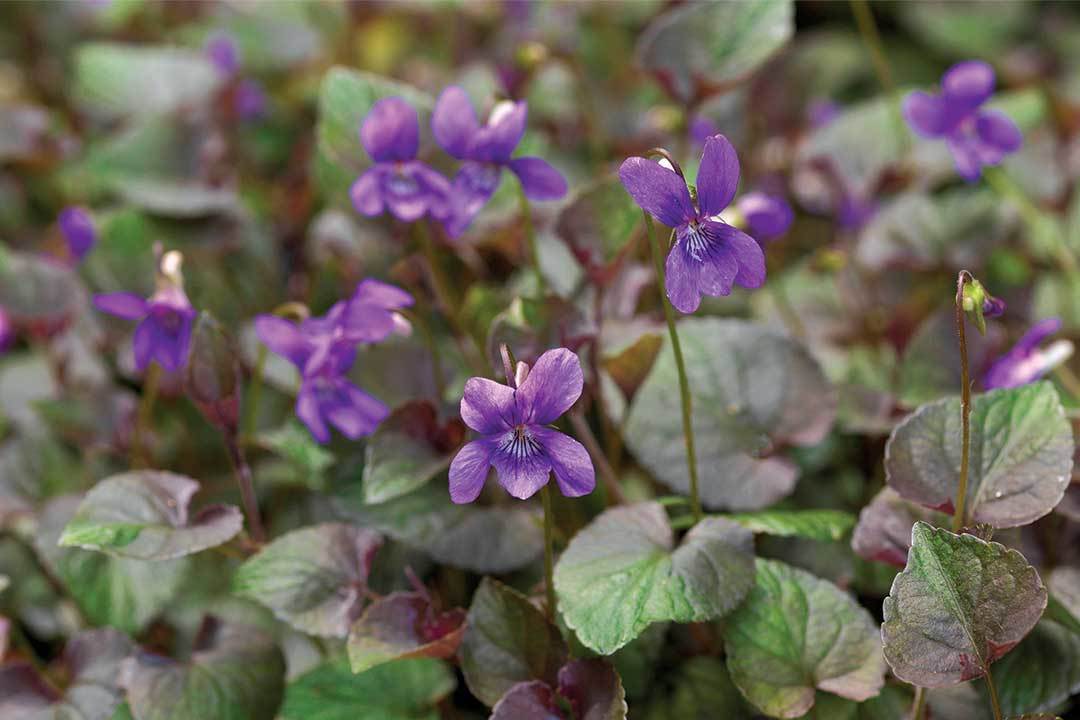
Labrador violet sets a mood—and a few seedlings
Name: Viola labradorica
Zones: 3–8
Size: 4 inches tall and 12 inches wide
Conditions: Partial to full shade; average to moist soil
Native range: Northeastern North America
Nothing catches my eye in early spring like the moody dark foliage of Labrador violet as it emerges from its winter rest. The dark color fades to a purple tinge by midsummer, but it still attracts attention. The purple blooms arrive in late spring. I grow this in partial shade, but it reportedly can take full sun and full shade. You can experiment with the siting by using the seedlings that will pop up. While not weedy, Labrador violet has provided me with three or four volunteers each spring, establishing a nice clump. What is sold in the nursery trade, however, might actually be Viola riviniana, a nonnative species with potentially bluer flowers, increased height, and reduced hardiness (to Zone 5). If any of this is a sticking point for you, dig into the research and question your intended source.

Dwarf lady’s mantle is easy and adorable
Name: Alchemilla erythropoda
Zones: 3–9
Size: 6 inches tall and 12 inches wide
Conditions: Full sun to partial shade; average to moist soil
Native range: Russia and Turkey
The puppy-kitten-piglet rule of cuteness holds that the smaller version is always more adorable than the large. Dwarf lady’s mantle follows that rule, too. I grow the full-size version (Alchemilla mollis, Zones 4–7), and while I like it, it doesn’t make me say “Awww” as I reach for my phone to take a picture. Dwarf lady’s mantle does just that. The foliage is a bit more lobed and toothed than regular lady’s mantle, but other than that, it looks like the big version got nipped by the device Rick Moranis built in Honey, I Shrunk the Kids. Dwarf lady’s mantle even has the sprays of frothy gold flowers that somehow seem a bit too big for the little plant. Partial shade is best, where it will form a happy round mound of foliage.
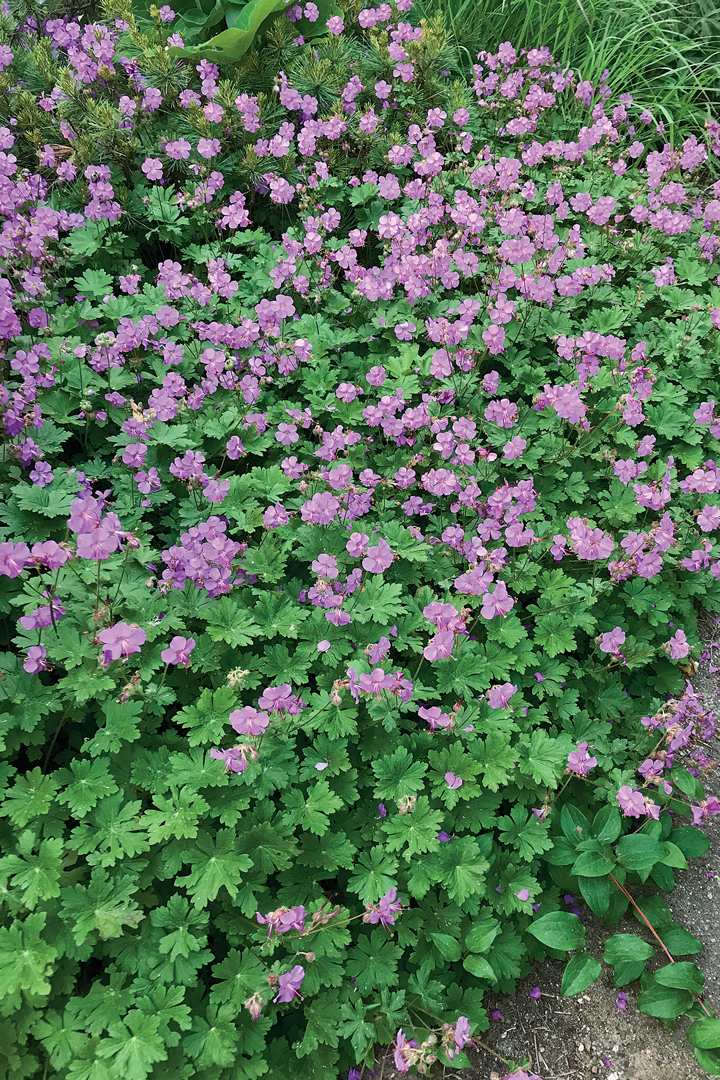
‘Karmina’ hardy geranium forms an easy, attractive mass
Name: Geranium × cantabrigiense ‘Karmina’
Zones: 5–8
Size: 10 to 12 inches tall and 16 to 18 inches wide
Conditions: Full sun to partial shade; average to moist soil
Native range: Hybrid of European species
I can’t think of a bed on my property that doesn’t have ‘Karmina’ hardy geranium. Well, the dry shade areas don’t, but I am going to try it there, too. This easy-to-grow, handsome plant creates a tidy mass of lobed and toothed foliage (it always reminds me of miniature, fat, Japanese maple leaves). Late spring and early summer find the leaves topped with a sea of lavender-pink flowers. The flowers are sterile, unfortunately, so the plant doesn’t do much for pollinators. In late summer and early fall, the aromatic foliage takes on shades of yellow and red, which, again, reminds me of Japanese maples. I would love to offer some maintenance advice, but I don’t do anything to it. I don’t even clean up the foliage in spring. The new growth just covers the dead leaves from the previous year.
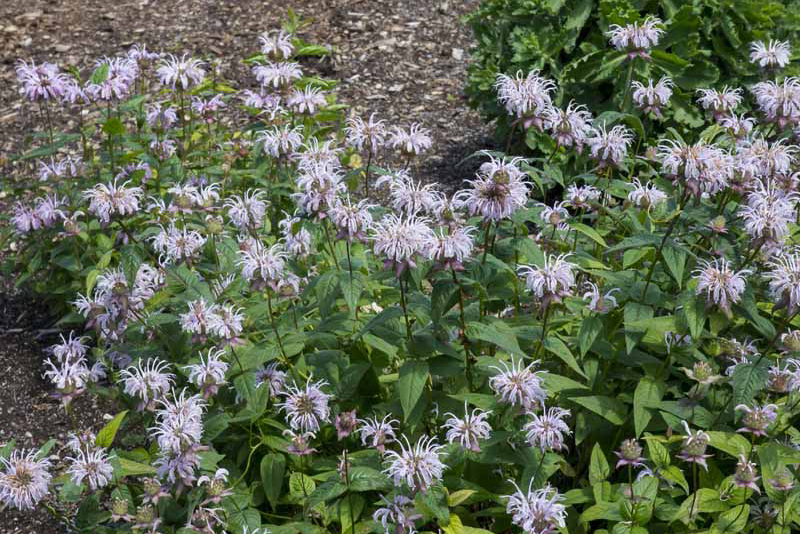
Eastern bee balm is tough but not thuggish
Name: Monarda bradburiana
Zones: 4–8
Size: 12 to 18 inches tall and 2 feet wide
Conditions: Full sun to partial shade; average to dry, well-drained soil
Native range: Central and Eastern United States
I’m not sure where I first heard about eastern bee balm, but a plant that was under 2 feet tall and could handle hot, dry spaces definitely piqued my interest. After growing it for several years, I wonder why more people don’t do the same. In early summer the short stems are topped with jester hats in the pink-white-lavender spectrum. They last for weeks, to the delight of all sorts of pollinators, who are always stopping by. I’ve never seen or heard of it getting powdery mildew or spreading thuggishly throughout a bed. A week or so after it blooms, it might look like somebody sat on it, but this occasional floppiness can be alleviated by cutting back the stems a bit.
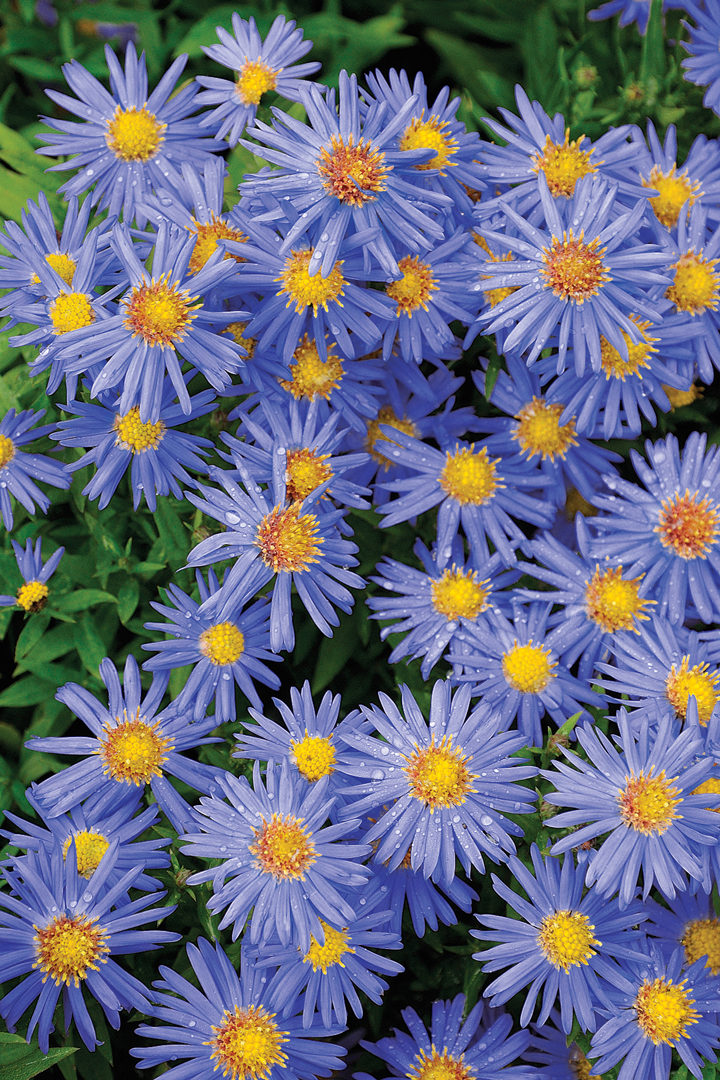
‘Professor Anton Kippenberg’ aster offers a flop-free fall
Name: Symphyotrichum novi-belgii ‘Professor Anton Kippenberg’
Zones: 4–8
Size: 9 to 12 inches tall and wide
Conditions: Full sun to partial shade; average to moist soil
Native range: Eastern United States
I’ve never really liked looking at aster stems all season long until they finally decide to bloom in early autumn—when they flop. I thought with ‘Professor Anton Kippenberg’ New York aster topping out at about a foot tall, I would get the flowers without having to look at the stems. I was right. Around the time the kids go back to school, this plant explodes into a low mound of clear blue to light purple flowers that last up until the first frost. If it flops, I really don’t notice. I cut it back in spring, and sometimes, if I am in the mood, I pinch the stems in late spring or early summer in the hopes it will be bushier. It is an older cultivar, but worth searching out.
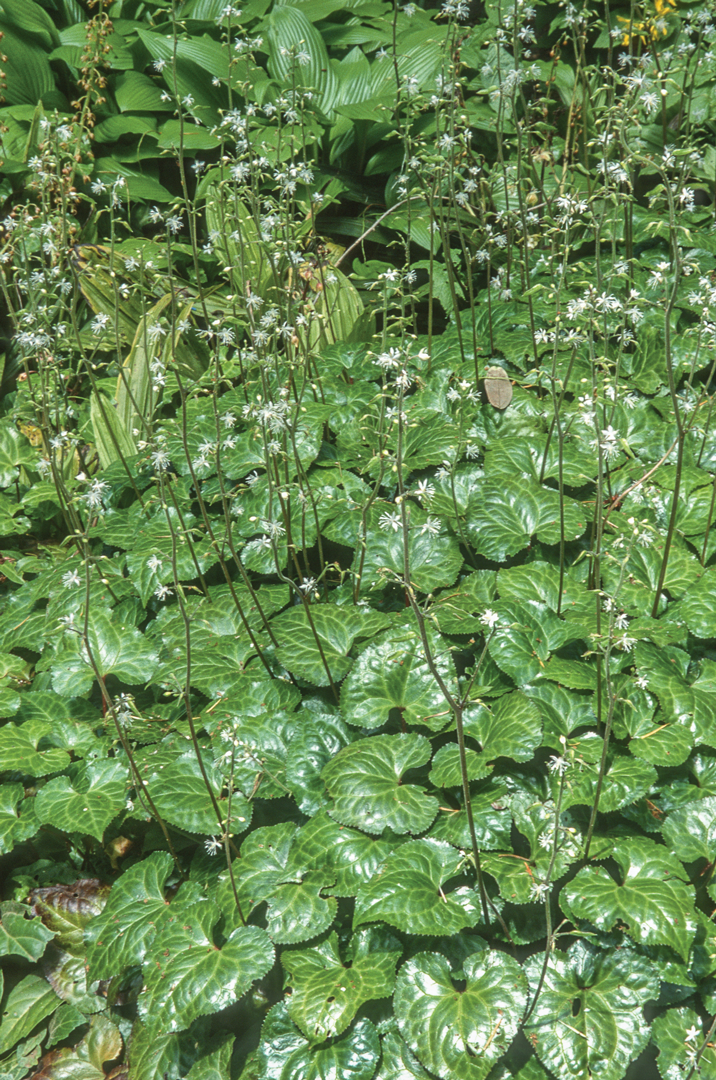
Beesia adds charm to the shade
Name: Beesia deltophylla
Zones: 6–9
Size: 12 to 18 inches tall and wide
Conditions: Partial to full shade; average to moist, well-drained soil
Native range: China
I kept seeing beesia, a beautiful shade plant, on my travels, especially in the Northwest. Tidy mounds of heart-shaped leaves, glossy green and mottled with purple, would always stop me in my tracks. During a visit to an amazing nursery near my house, I saw it and immediately bought two plants. I planted them in dry shade and admired the way a couple of less-than-common plants can really perk up an area. The following spring, one plant returned and one, a mere 3 feet away, did not. The beesia that lived was in an area that is a little more moist than the other spot, which has claimed the lives of several other shade plants that do just fine a few feet away. Since then, I have not watered the survivor at all. So a moist spot is probably best, and moisture to get established is a must.
Steve Aitken is the editor. He grows his short plants in his garden in Cheshire, Connecticut.
Sources
- Bluestone Perennials, Madison, OH; 800-852-5243; bluestoneperennials.com
- Broken Arrow Nursery, Hamden, CT; 203-288-1026; brokenarrownursery.com
- Digging Dog, Albion, CA; 707-937-1130; diggingdog.com
- Well Sweep Herb Farm, Port Murray, NJ; 908-852-5390; wellsweep.com
Fine Gardening Recommended Products

The Crevice Garden: How to make the perfect home for plants from rocky places
Fine Gardening receives a commission for items purchased through links on this site, including Amazon Associates and other affiliate advertising programs.

A.M. Leonard Deluxe Soil Knife & Leather Sheath Combo
Fine Gardening receives a commission for items purchased through links on this site, including Amazon Associates and other affiliate advertising programs.

Gardener's Log Book from NYBG
Fine Gardening receives a commission for items purchased through links on this site, including Amazon Associates and other affiliate advertising programs.




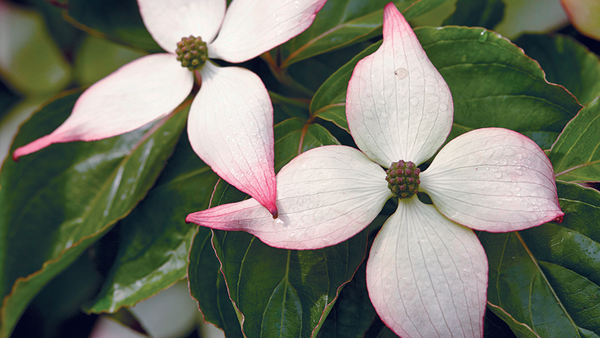














Comments
Log in or create an account to post a comment.
Sign up Log in